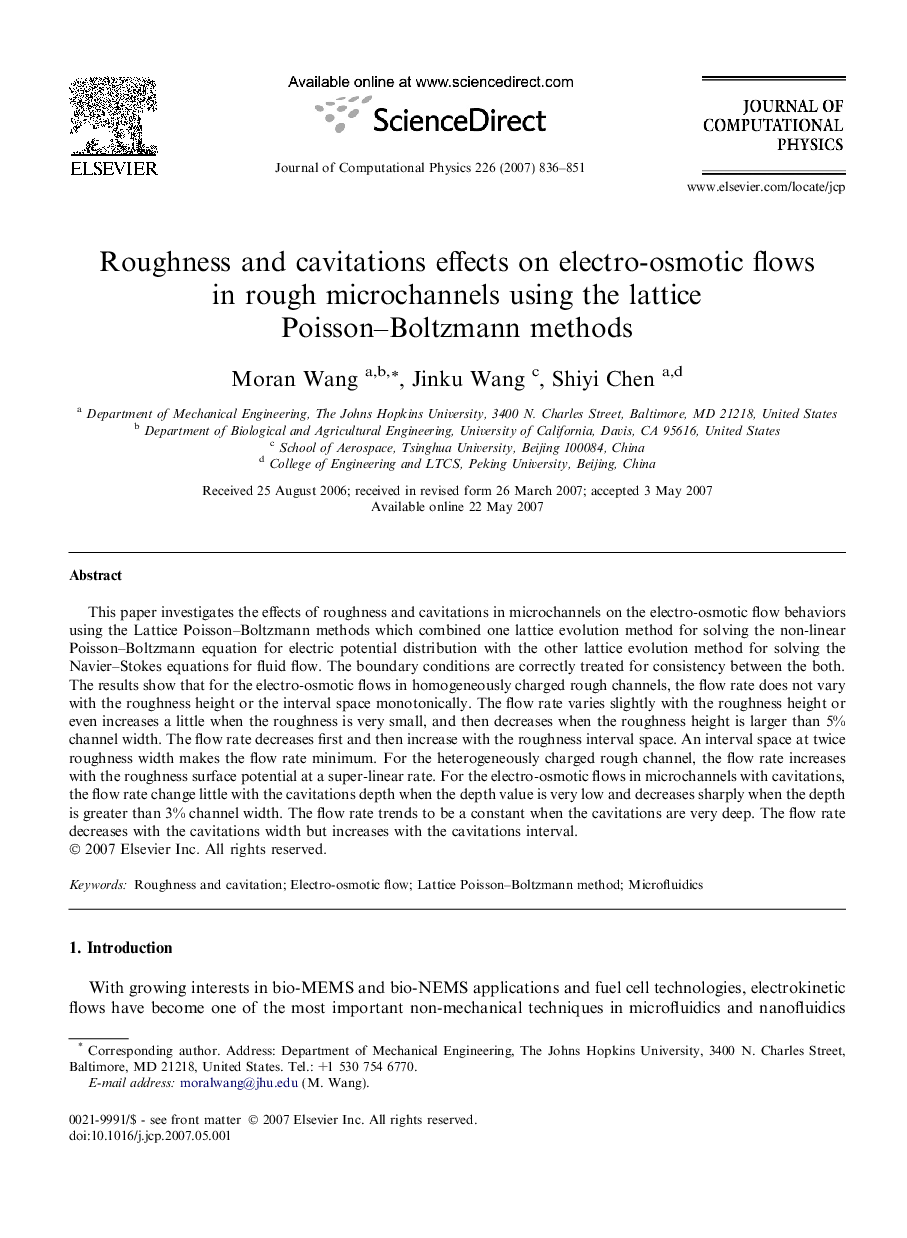| Article ID | Journal | Published Year | Pages | File Type |
|---|---|---|---|---|
| 522468 | Journal of Computational Physics | 2007 | 16 Pages |
This paper investigates the effects of roughness and cavitations in microchannels on the electro-osmotic flow behaviors using the Lattice Poisson–Boltzmann methods which combined one lattice evolution method for solving the non-linear Poisson–Boltzmann equation for electric potential distribution with the other lattice evolution method for solving the Navier–Stokes equations for fluid flow. The boundary conditions are correctly treated for consistency between the both. The results show that for the electro-osmotic flows in homogeneously charged rough channels, the flow rate does not vary with the roughness height or the interval space monotonically. The flow rate varies slightly with the roughness height or even increases a little when the roughness is very small, and then decreases when the roughness height is larger than 5% channel width. The flow rate decreases first and then increase with the roughness interval space. An interval space at twice roughness width makes the flow rate minimum. For the heterogeneously charged rough channel, the flow rate increases with the roughness surface potential at a super-linear rate. For the electro-osmotic flows in microchannels with cavitations, the flow rate change little with the cavitations depth when the depth value is very low and decreases sharply when the depth is greater than 3% channel width. The flow rate trends to be a constant when the cavitations are very deep. The flow rate decreases with the cavitations width but increases with the cavitations interval.
